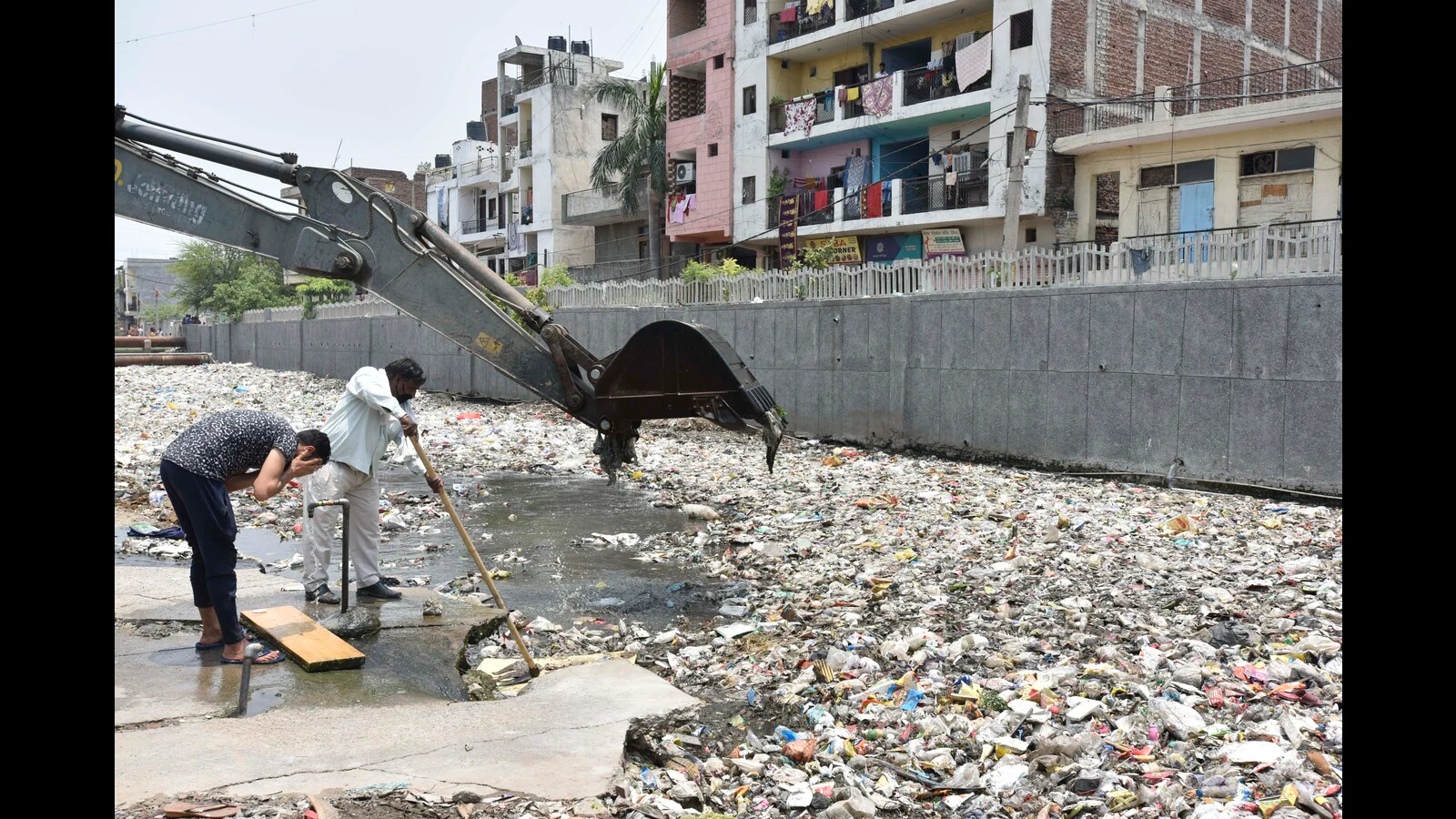[ad_1]
Parliament passed the Delhi Municipal Corporation (Amendment) Bill, 2022, this week. The Bill aims to reunify three municipal corporations of Delhi into a single, integrated and well-equipped entity. Opposition parties criticised the reunification plan, and accused the Union government of showing “blatant disregard” for the spirit of “cooperative federalism” and intruding on the powers of the Delhi government.
However, I think Delhi desperately needs a robust and autonomous municipal body, which can make unified policies, generate its own financial resources and maintain inventories, and prepare and implement appropriate strategies for the Capital in an efficient manner. The importance of the Municipal Corporation of Delhi (MCD) in the development of the city cannot be disregarded. Before the trifurcation in 2012, the corporation controlled 94% of the city’s 1,484 square kilometres; the rest 6% was under the New Delhi Municipal Council (3%) and the Delhi Cantonment Board (3%).
To understand why I am arguing for the reunification of MCD, let’s look back for some perspective. Between 1951 and 1956, Delhi was a state. Its statehood was taken away by the States Reorganisation Commission, which felt that the interest of Delhi’s residents and the city’s status as the seat of the national government would be optimally balanced by making the city a Union Territory with a powerful municipal body.
The first master plan of Delhi was drafted in 1962 to develop the city zone by zone and make each zone self-sufficient with its social, educational, and health care infrastructure. Unfortunately, the plan failed, and within a decade, city planners realised that 25% of Delhi’s land and 45% of the buildings did not adhere to the master plan’s guidelines. The provisions of successive master plans have also been flouted. The result: Almost 75% of Delhi has seen unplanned growth.
This unplanned growth is also the result of two related developments: One, the indifference of the implementing agencies in following the laws in letter and spirit, and the enormous population growth (from 6,96,000 people in 1947, it now stands over 11 million, as per the 2011 census, and growing). Add to this mix, another debilitating hurdle: The lack of financial independence of the three corporations. But this should not have happened. The setting up of the finance commission for the distribution of taxes between state governments and municipal corporations allowed for the flow of funds from the state government to the local bodies.
It also encouraged the local bodies to generate their resources to maintain their obligatory (sanitation, public health) and discretionary functions (education, construction, and maintenance of rest houses).
However, the allotment of funds to the city’s local bodies has never been as per the commission’s recommendations for reasons best known to the government of Delhi.
In such a scenario, the trifurcation put an enormous financial strain on the local bodies. In addition, conflicting policies on similar matters created confusion and affected the availability of facilities to citizens.
Before the trifurcation, MCD implemented significant reforms to augment revenue collection, improve service delivery, and cut wasteful expenditure. It introduced best practices in managing finances, revenue, expenditure, and debt. The offices were provided with computers and connected through 35Mbps lines. All MCD’s activities were re-engineered and automated to ensure transparency and efficiency.
However, the trifurcation killed all these initiatives. The e-governance project would have gone a long way in preventive vigilance, but was scuttled. The Delhi government was expected to provide the cost of the e-governance project in the spirit of the new legislation of GNCTD (e-SLA), which proclaimed to incentivise efficiency and accountability in the administration. The e-SLA incentives should have been extended to MCD.
The trifurcation of MCD also failed the decentralisation test. There were 12 zones in the unified corporation, each headed by a deputy commissioner. But the number of zones in the city remained the same even after the trifurcation.
A unified MCD must make Delhi a truly global city when it comes to cleanliness and infrastructure. There must be a paradigm shift in the approach towards waste management. We have been hearing about the multiplicity of authorities in the city as being the biggest stumbling block in the way of providing citizens a happy and healthy quality of life.
To fulfil the dream of making Delhi a top-class city, the government must ensure that funds reach the local body at the beginning of a financial year, and MCD makes ample efforts to generate revenue from other sources. There is a need to set targets and objectives at the beginning of the year with an annual appraisal by the lieutenant-governor (L-G) of Delhi at the end of the year. The L-G must then submit a report to the central government about further requirements and shortcomings of the corporation.
The Capital’s citizens need a peaceful and clean environment — the essence of good governance — to flourish and develop. A strong, unified, and robust MCD can provide the right environment for the city and its people and make Delhi a truly global city.
KS Mehra was the last commissioner of the unified MCD (2008 to 2012) The views expressed are personal
[ad_2]
Source link

